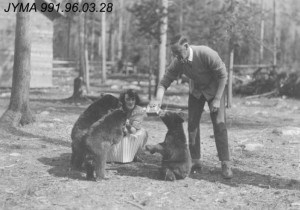
On July 8, a black bear ripped open the side of a tent trailer to get to some hot dog buns at Wabasso Campground. That same day, another plunked itself on the side of the Valley of the Five Lakes trail, approaching groups of hikers and forcing them to drop their packs so it could feed on the snacks inside.
According to John Wilmshurst, Parks Canada’s resource conservation manager in Jasper, both animals had been “clearly food-habituated,” and Parks had no choice but to kill them.
“Both bears were exhibiting high levels of habituation, and in that situation we have a protocol and guidelines for managing bears,” he said. “Under those circumstances, when a bear shows high levels of habituation, we have to kill the animal.”
In the case of the bear on the Valley of the Five Lakes trail, Parks had been monitoring it since receiving reports that a hiker had fed it about a month earlier. On a couple of other occasions, it had also approached hikers looking for food.
Wilmshurst explained that when a bear approaches hikers, usually people’s first reaction is to drop their packs as a diversion so they can escape, because most people realize it’s the food the bear wants. So, the bear quickly learns that if it approaches people it will get a food reward from their packs.
“Bears learn very quickly; they’re very food motivated. They spend almost all their waking hours eating, and when they can find a source of food, then they pursue that, and that’s one of the challenges we have with managing bears,” said Wilmshurst.
When the bear began stalking people along the trail July 8, Parks sent two human wildlife conflict specialists to the area to check things out. The team tried all kinds of “adverse conditioning” to scare it away. They shouted at it, tried to scare it away with bangers, but nothing worked; it just kept approaching people.
“Because of that we just didn’t really have any choice—there’s nothing you can do with a bear like that,” Wilmshurst said.
Similarly, Parks specialists spent several hours with the Wabasso bear trying to scare it out of the campground. But each time they forced it away; it would simply circle right back to the campground. They even tried setting a trap for it, but that didn’t work either.
Eventually, they made the decision to kill it.
Wilmshurst stressed that Parks does not make the decision to kill animals easily. The organization does everything it can to educate people in the dangers of feeding bears—pamphlets, social media, road signs and staff—but just about every year bears have to be killed because someone has fed them and they have become habituated.
“This is something we do only after careful consideration. We do it extremely reluctantly because we value the black bear population in the park. But ultimately the safety of the visitors is paramount to us—so we only do this when it is a serious safety concern, and in these two cases it was,” he said.
Trevor Nichols
[email protected]
